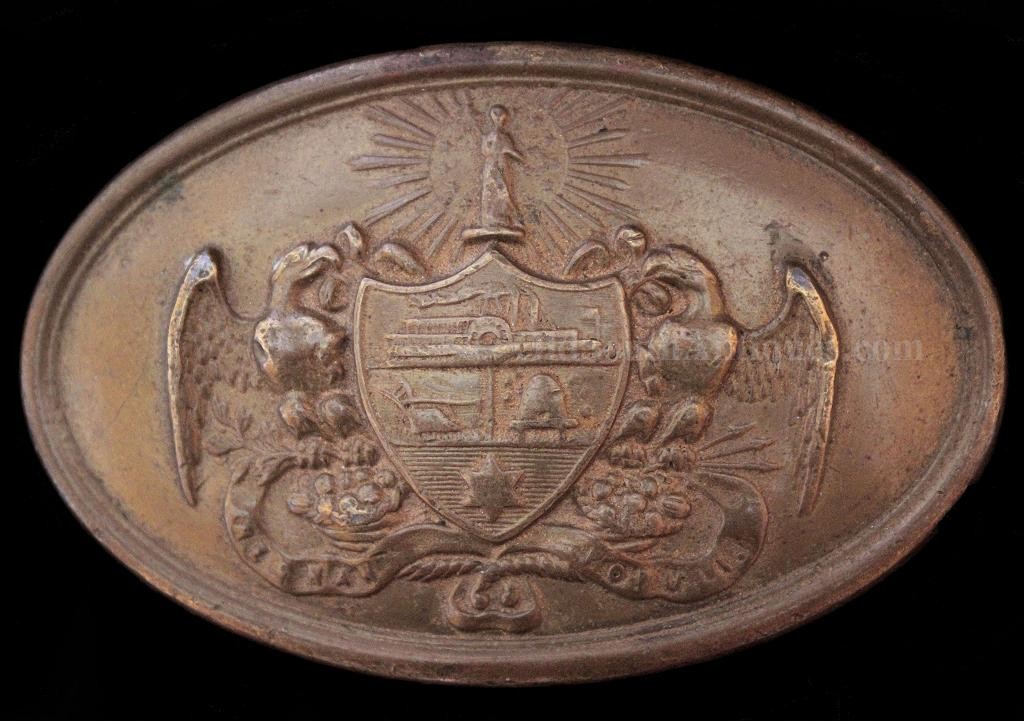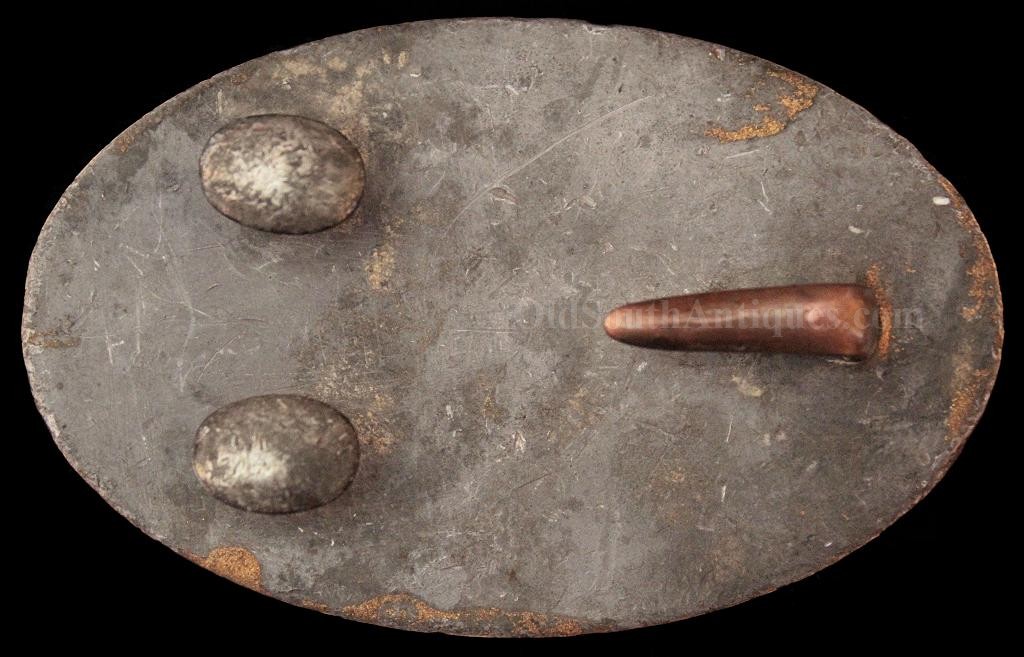
| Catalog | Past Items | Order Info | Terms/Conditions | About Us | Inventory Clearance |
In the decade before the War, Arkansas theoretically had four militia companies in each county. They were to be Infantry, light Infantry, Artillery and Cavalry. In reality only Pulaski and Phillips Counties had one or more companies in each county. In 1860 Pulaski had four companies, one each of the various authorized branches. Captain Gordan Peay commanded the Infantry company, and his was the only uniformed company in the county. In addition to the militia companies, Arkansas’ Army included the Cadets of the Arkansas Military Institute in Dallas County. The Cadets formed Company I, 3rd Arkansas Infantry, and served in the Army of Northern Virginia.
The State of Arkansas had made no effort to uniform her troops until July 15, 1861. Obviously, this northern made belt plate had been in the state months before. So, these plates were private purchase items by one of the uniformed companies or cadet corps.
The Arkansas State Seal used throughout the 1850s consisted of a shield containing commerce and farming symbols, with an eagle on each side of the shield. The whole was surmounted with the Goddess of Liberty, ringed by thirteen stars and projecting rays. A ribbon under the shield bore the inscription "Regent Populi”. Loosely translated it means the people are king.
The plate was made by Emerson Gaylord of Chicopee Falls, Massachusetts, just prior to the War. Gaylord also supplied accoutrements to the Southern States of Virginia, Maryland, Georgia, Alabama and Mississippi.
The plate can be traced back to circa 2005, when the grand master of Civil War artistry, Don Troiani acquired it "on an estate call from a guy in New York who had collected CW material as a boy”. This plate and a Louisiana plate he acquired from the same estate had been painted gold. Painting accoutrements gold was a common practice among the members of the Grand Army of the Republic, or G.A.R. It says something of the human spirit when the most terrible times of their lives had turned into golden memories with age. The gold has been removed but traces still remain in the recessed areas. The plate has been published in some of Mr. Troiani’s books.
This is the most valuable of the Confederate State plates, and thus, it is most imperative that one go to extremes in verifying its authenticity. To further that, the plate was x-rayed in cross section to verify that the brass was only thin stamped skin, rather than having been cast and filled, which would have been necessary to create a forgery. As you can see from the image, both the skin and the filler are clearly delineated, demonstrating without a doubt that the plate is a filled die stamped skin.
Copyright © 2024 OldSouthAntiques.com All Rights Reserved.
Privacy Policy | Terms of Use
Powered by Web-Cat Copyright © 1996-2024 GrayCat Systems


